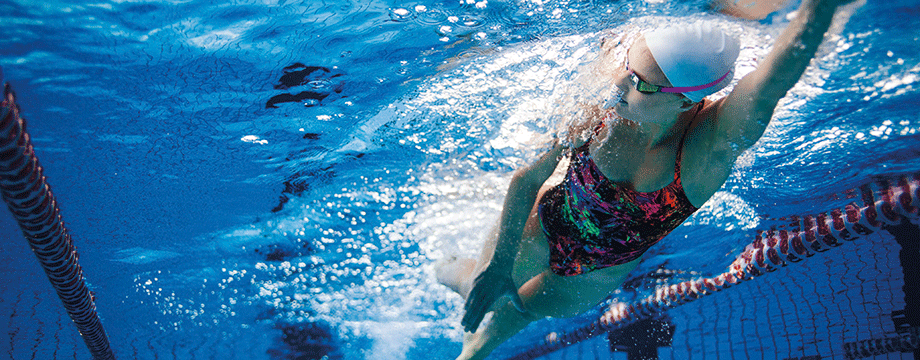A stroke of success

Want to improve your swimming stroke? Try these top tips
Swimming is a great form of all-round exercise, helping you to stay fit and healthy no matter your age and ability. Regular swimming can reduce the risk of chronic illnesses, such as heart disease, type 2 diabetes and stroke. It can also boost your mood and keep your weight under control.
“I’m always being asked for my advice on how people can improve their swimming stroke and get more out of swimming for fitness,” says Alison Sutherland, Regional Swimming Development Manager at Everyone Active. “Swimming as a sport in the media, especially with the Olympic Legacy and with athletes like Rebecca Adlington in the spotlight, has really made people want to learn more. It’s less and less about playing in the pool and more about technique and fitness. The funny thing is that most adults haven’t had a lesson since we were children, if ever at all, and as such find themselves out of breath after one length. Like anything, swimming takes practice and learning the correct technique will make all the difference.”
Alison has put together some top tips below on how swimmers of any ability can improve their strokes through their body position:
Front crawl
When swimming front crawl, aim to keep your body position as flat as you can to ensure your body remains streamlined in the water. A slight slope downwards from the hips is essential to ensure the kick stays under the water; this will ensure you have less resistance when moving through the water. You should always keep your head, back and spine in a relaxed neutral position. Your head should only move as it rotates to take a breath.
Breaststroke
Although your propulsion will come from your legs, core strength is essential for breaststroke. Try not to let your hips drop too far down in the water for the best stroke. Try keeping your neck and shoulders relaxed as you swim to ensure your arm action will be efficient enough. Look down towards the bottom of the pool as you glide to relax your neck after the breath has been taken. Swimming with your head up will cause strain on both your neck and lower back. Looking down also helps the body to become more streamlined during the glide.
Backstroke
By keeping your body close to the surface of the water you will reduce drag and therefore travel through the water more easily. Keep your head still and your neck relaxed. This will reduce the strain and help keep you in a more streamlined position. By holding your head up it will cause your legs to drop. As a result this will cause more drag and slow you down. A good head position can be held by ensuring your ears are pillowed in the water.
All strokes
Remember when swimming to try and use long, slower strokes even when you are tiring, as this will ensure your stroke is more efficient and you will move through the water more easily.
Chartered physiotherapist Lyndsay Hirst works with swimmers to help them strengthen their bodies and avoid injury. She has developed a programme of workouts to help swimmers improve the strength and control of their shoulders, torso and hips and to improve their technique and stroke. Here are two of Lindsay’s exercises to help build strength and control around the spine and shoulders.
Breast stroke prep
Breast stroke prep is performed on your tummy with a head support (a small cushion will do). Hands by your side. You need to make sure your spine is in a neutral position so press your pubic bone down to the floor as you perform the exercise. Take a lateral breath in to prepare. As you exhale, lift the shoulders from the floor, pull the shoulder blades down towards the base of the spine, then lift and hover the hands as well as the head. Make sure you don’t look up, keep your eyes focused to the floor (imagine you are trapping a peach between your chin and chest). Lower back down as you inhale. Repeat up to 10 times.
Swimming level 3
Swimming level 3 is performed on your tummy with a head support. You need to make sure your spine is in a neutral position so press your pubic bone down to the floor as you perform the exercise. Hands above the head, shoulder width apart. Take a lateral breath in to prepare, and as you exhale lift the right arm and the left leg, keeping the spine still and your head down. Repeat on the opposite side, opposite arm, opposite leg. Perform 10 on each side.
To find out more about Lyndsay’s exercise programme, visit www.yourpilatesphysio.com
Read previous Your Living articles here...
Read articles from our latest issue here...